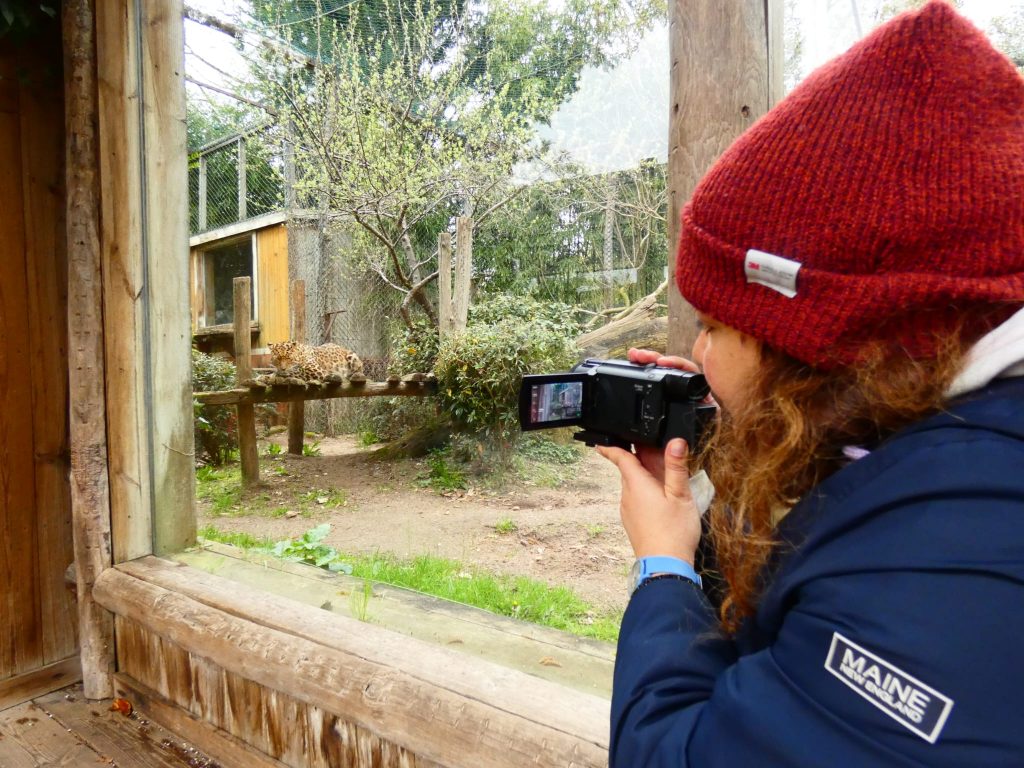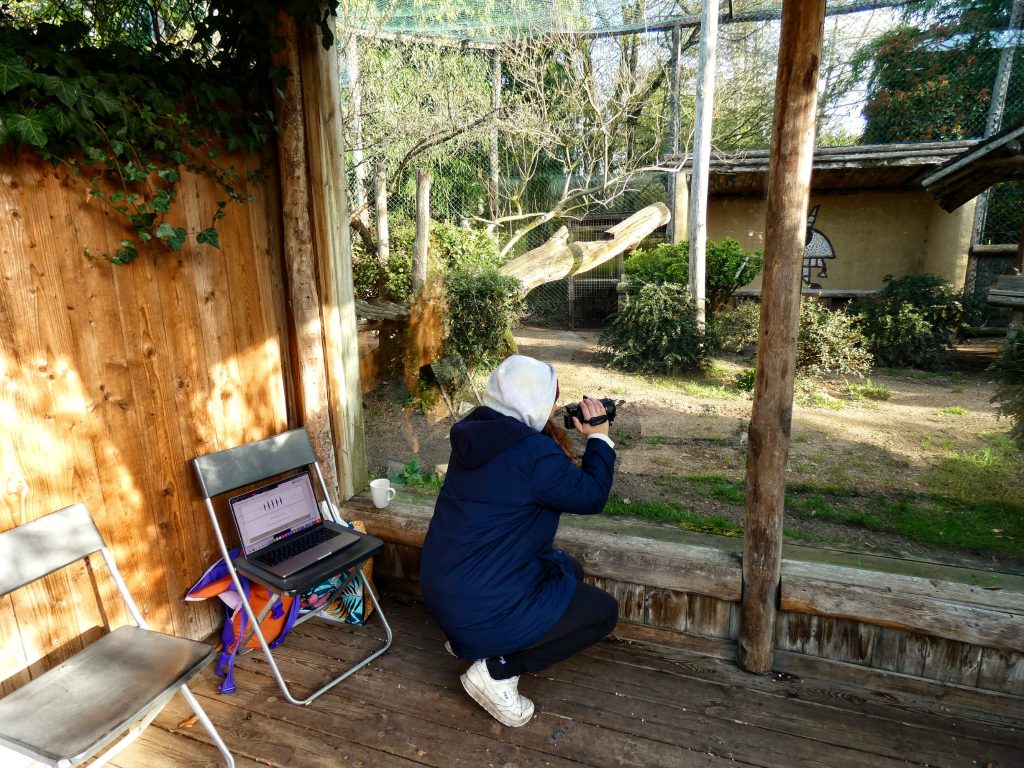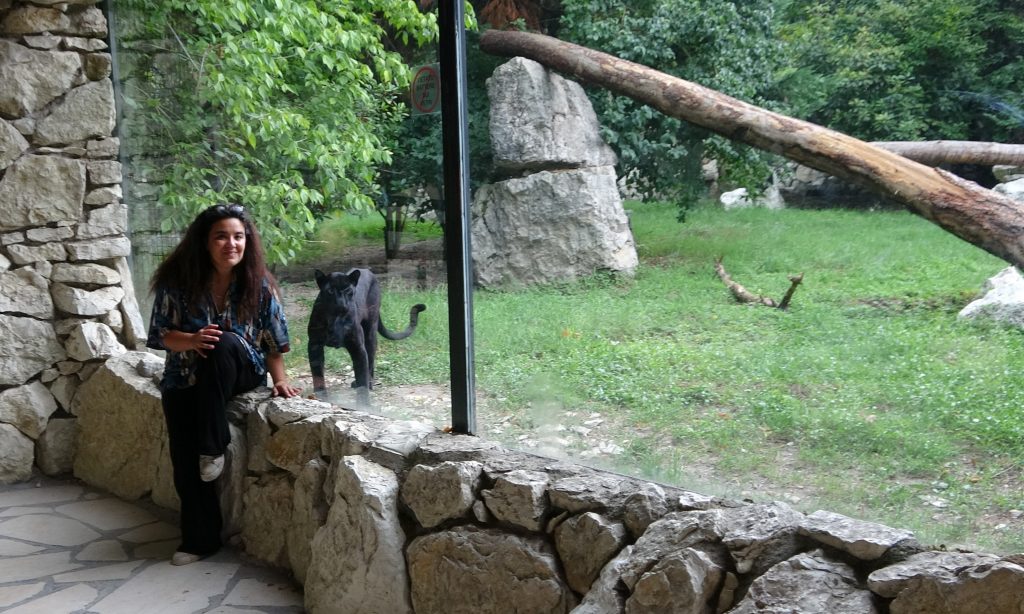
For me, nothing is more exciting than the world of animal communication. Studying how they “talk” and “express” their needs is my passion, and I’ve been lucky to spend the last five years of my life doing it. I am a doctoral student in conservation species at Manchester Met. My research aims to study the acoustic biology of leopards to improve their census technique. Currently, the census technique is based on photos taken from camera traps. Can you imagine taking a picture of a leopard in the forest? In the night? This method has shown some limits due to the environmental, physical barriers and elusive nature of Felid species. Thus, it must be improved to increase the population estimation accuracy. Since there are these limits in using camera traps to detect leopards, I’ve been considering improving the counting method, using their sounds. I intend to hear them in nature instead of seeing them and recognise individuals using their voice. It sounds complicated, right? Well, it is…but the technique I am applying is close to the one used for developing the famous Alexa Amazon software. To let you understand better, researchers developed that software by using features of the human voice in the command “Alexa” that can be recognized by the device. During my PhD, I mostly focused my research on a particular vocalization of leopards called the long-distance call (LDC) that they use to defend territory and attract mates (you can listen to it by clicking on the leopard image). Being a vocalization that they utter without visual contact, I theorised that they probably give through this sound information about an individual’s identity. Well, I proved it! Using parameters extracted from LDC, I can discriminate leopards. Ok, now you are thinking, where did I get the sound of leopards? Unfortunately, it is not an animal that we used to see in our forests, but they are closer to us than we imagine. I found them in the cities, or near to them, where? In zoos!

During these five years of research, I’ve travelled around Europe and the UK, searching for zoological institutions hosting leopards. The challenge was to record at least 30 individuals, and it was a huge effort because usually, you can find a couple or a singular individuals in the zoo. So, I had to move around more than one zoo in more than five countries, to reach a good sample size, and I had the pleasure of being supported by fifteen zoos. Once I proved that leopards have vocal signatures, I worked on their acoustic perception. Do they recognize their mates using their “voice”? It was my second research step: I ran playback experiments by returning to the fifteen zoos. I designed a non-invasive experiment by playing back the LDC of a leopard who lived in the same enclosure of the subject (which I called familiar LDC) versus the LDC of leopards from another zoo (unfamiliar LDC). Using specific behaviours, I was able to demonstrate that leopards do recognize enclosure mates’ voices. It is like, “Hey, you sound familiar, I know who you are!” and here we are; leopards might use LDC vocalizations to recognize an individual they know because they were previously sexual mates or neighbour competitors. They might use this kind of communication to understand the presence and movements of conspecific in their area. The zoo-based research results will open a new frontier regarding the acoustic communication of felids and the application of this knowledge to their conservation. Traveling around zoos allowed me to learn a lot about leopard biology, which was important for my professional profile. I’ve been organizing my research in more than five countries, building an international working network to improve species conservation. This research has not ended; as you can imagine, when you are focused on trying to respond to some questions, the world will give other answers that might be useful to investigate deeply. I need to test the techniques in the wild, and further effort will be made to try the new method in different wild leopard areas. The network that I built will support and help field expeditions, but you need to be patient to see the future results. Stay tuned!




